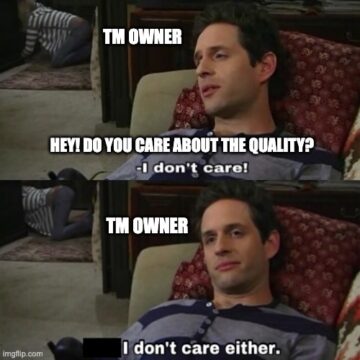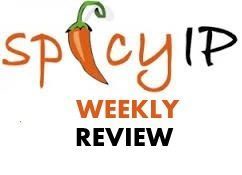Illustration of a character stealing money
” data-medium-file=”https://platoaistream.net/wp-content/uploads/2024/05/law-commissions-289th-report-trade-secret-and-economic-espionage-1.jpg” data-large-file=”https://platoaistream.net/wp-content/uploads/2024/05/law-commissions-289th-report-trade-secret-and-economic-espionage.jpg” src=”https://platoaistream.net/wp-content/uploads/2024/05/law-commissions-289th-report-trade-secret-and-economic-espionage.jpg” alt=”Illustration of a character stealing money” class=”wp-image-47887″ srcset=”https://platoaistream.net/wp-content/uploads/2024/05/law-commissions-289th-report-trade-secret-and-economic-espionage.jpg 1024w, https://platoaistream.net/wp-content/uploads/2024/05/law-commissions-289th-report-trade-secret-and-economic-espionage-1.jpg 230w, https://platoaistream.net/wp-content/uploads/2024/05/law-commissions-289th-report-trade-secret-and-economic-espionage-2.jpg 768w, https://platoaistream.net/wp-content/uploads/2024/05/law-commissions-289th-report-trade-secret-and-economic-espionage-3.jpg 1536w, https://platoaistream.net/wp-content/uploads/2024/05/law-commissions-289th-report-trade-secret-and-economic-espionage-4.jpg 2048w, https://platoaistream.net/wp-content/uploads/2024/05/law-commissions-289th-report-trade-secret-and-economic-espionage.webp 1200w, https://spicyip.com/wp-content/uploads/2024/05/58246-600×428.jpg 600w” sizes=”(max-width: 1024px) 100vw, 1024px”>
The Law Commission (LC) recently released its report no. 289- “Trade Secret and Economic Espionage”. (Part 1, Part 2and Part 3) In this post, I will discuss the key elements of the report and the draft bill proposed by the LC. First, I will analyze the provision on Compulsory Licensing of Trade Secrets included in the bill and discuss its upside and downside in the current form. Second, I point out the key provisions in the bill which indicate a shift from the current common law regime of Trade Secrets. Then, I will list out the various recommendations made by various stakeholders in the report and identify which stakeholder had a final say in the draft bill. Lastly, I will discuss the proposals on Criminal remedies for misappropriation of Trade Secrets and Trade Secrets Registry.
Compulsory Licensing of Trade Secret
Why is Trade Secret (TS) important? (refer here for the meaning of Trade Secret. See also more below in this post) To understand this, let’s revisit the debate around compulsory licensing (CL) during the Pandemic. Although several vaccines against Coronavirus were developed in record time, the access to vaccines in Lower- and Middle-Income Countries was disappointingly low compared to higher-income countries. Why? Lower supply and Exorbitant Prices. To bridge this disparity, it was suggested that the ‘vaccine patents’ should be compulsorily licensed, allowing local third parties to produce the vaccines at affordable prices. However, the information disclosed in Patents, on its own, is insufficient for third parties to manufacture complex biological vaccines. Why? A Patentee may choose not to disclose information pertaining to manufacturing technology or methods used for carrying out the invention in an effective and commercially viable way. The information is also not covered in the patent disclosures despite best mode disclosure some know-how is unconnected with the patent over an invention. This ‘additional’ undisclosed information i.e. ‘Trade Secret’ may be crucial for third parties to manufacture complex biological vaccines.
Without such information, a CL of the patent will be useless. (here) The Patentee, on the other hand, is not obligated to disclose this information in the patent specification so long as it meets ‘best mode disclosure’.(here) The TS information provides an economic or competitive advantage to the patentee since it is not generally known. As a result, there is a greater incentive for a patentee to keep this information confidential rather than share it with other entities. Currently, in India, TS are protected under the broader regime of Contract Law and Common Law remedies. Also, TS, as against patents, are protectable in perpetuity as long as it remains confidential.
The LC report noted the failure of attempts to get companies to voluntarily license TS during COVID-19. As a result, it proposed a separate section in the Protection of Trade Secrets Act, 2024 (‘Draft Bill’) for CL of TS. Certain key features of the provision are-
- The Government can issue CL for use of TS to third parties or the Government in a situation of public emergency which involves substantial public interest.
- The recipient of the TS will be duty-bound to not disclose confidential information during or after the expiry of the license.
- The Government can terminate the license after such a public emergency has ceased to exist.
The LC has sought to balance the public interest with the interest of a licensor by narrowly construing ‘disclosure’ to mean disclosure only to a third party under strict obligations of confidentiality. It does not mandate public disclosure of the TS since the commercial value of the information derives from its secrecy.
Will the provision bring any real change?
It can be argued that CL of TS may help bring Companies to the negotiating table for a reduction of prices. For instance, if during a public health emergency, a vaccine manufacturer refuses to reduce prices despite repeated insistence, the Government may threaten to issue a CL of the Patent and TS. Fearing possible future commercial losses (also a possible fear that the TS might be leaked), the companies will be forced to negotiate for fairer and affordable prices. As a result, the Government will wield a potent weapon which forces big pharmaceutical companies to come to the negotiating table.
However, the assumption is that the provision, in its current form, has a strong enforcement mechanism. Does it?
In my opinion, the answer is a resounding no. There is no mechanism to force a pharmaceutical company to involuntarily share its manufacturing technology without a voluntary licensing agreement. It is not possible to compel an unwilling company to reveal its know-how and know-whys to third parties or the government. There are no provisions which penalize a company for refusing to share their confidential information in a situation of public health emergency. In such a situation, what is to be done?
Possibly, the assumption is that since the market share of these companies in India is too substantial for them to leave, they will try to negotiate with the stakeholders, fearing extreme actions or reprisals which might hurt commercial interests.
Irrespective of how the Government seeks to enforce this section, it will have a huge impact in terms of innovation in India. It needs to be careful in devising a detailed mechanism to enforce this section rather than adopt an ad hoc mechanism during crises.
Key Provisions in the Draft Bill
First, it provides clarity as to what qualifies as a ‘Trade Secret’. Currently, TS is referred to as ‘confidential information’ in India. Although Confidential Information has been defined in certain cases (Rochem v. Nirtech), sometimes the courts fail to answer whether the information is confidential in the first place or not. (Markets and Markets Research Pvt. Ltd. v. Meticulous Markets Research Pvt. Ltd. & Ors.) The Bill, borrowing from TRIPS, provides the following conditions to qualify as trade secret-
- The information is not generally known;
- The commercial value is derivable from the secrecy of the information;
- The holder of the information took reasonable steps to keep the information confidential; and
- Disclosure of the information will lead to damages.
Second, it provides an alternative adjudication mechanism in the form of Commercial Courts for misappropriation of TS. To be clear, the common law route for breach of confidence/ trust is still open to parties since the Act does not derogate from other available remedies. (Sec. 13) The reason is that since TS is a major commercial asset, the expedited process with relaxed procedural requirements under the Commercial Courts Act, 2015 will provide a swift resolution.
Third, it provides protection against ‘groundless threats’ of legal proceedings. Prashant, in his paper, details how criminal actions are pursued by employers to threaten ex-employees from joining a competitor since the courts sometimes equate confidential information with property. The LC notes that TS cannot be treated on par with property since it does not confer ‘monopoly rights’ on the holder of information. Rather, it can be lawfully acquired by independent discovery, reverse engineering etc. Also, unlike other forms of IP law, there is no dissemination of information to the public. The bill, by mentioning various lawful means to acquire a TS (Sec. 4), indirectly clarifies that TS is not a proprietary concern with monopoly rights for the holder. As a result, pursuing criminal remedies as a threat tactic will no longer be useful.
Fourth, the bill creates a ‘whistleblower’ exception to TS. (Sec. 5) If the TS is disclosed (i) to expose an unlawful act or professional misconduct; or (ii) in good faith to protect public interest, it will not mean misappropriation of TS in the bill. Prashant, in his paper, had proposed codifying an exception against private persons and corporations for whistle-blowers to publish confidential information in the public interest without fearing legal proceedings.
Fifth, it provides that ‘experiences and skills’ acquired by an employee during normal profession practice are not TS. (Sec. 2(f)) In Niranjan Golikari v. The Century Spinning, SC had restrained an ex-employee from joining a competing firm post-termination. The court noted that the employee can disclose ‘special processes’ and ‘special machinery’ that was taught to him during the course of employment to the competing firm if allowed to join the respondent. Prashant highlights that this reasoning is flawed since it assumes that an employee cannot work for the competitor without divulging confidential information and breaching his duty of confidence. The newly added provision safeguards against a similar conclusion being reached by courts in the future and protects an employee’s mobility. Protection against groundless legal proceedings will also come to the aid of employee mobility.
Consultations
The stakeholders consulted for proposals on the law can be broadly divided into four groups-
- Judicial Perspective
- Only Hon’ble Justice Pratibha Singh was consulted in this group.
- She supported a separate legislation for Trade secrets for clarity and enabling technology transfer.
- TS is not a property but an intangible asset which is a database in a larger form.
- Against compulsory registration of TS.
- No need to adopt criminal remedies in the new law against the misappropriation of TS since IPC suffices.
- Suit relating to misappropriation of TS must fall within the scope of the Commercial Courts Act, 2015.
- Academic Perspective
- Prof. (Dr.) N.S. Gopalakrishnan, Dr. Arul George Scaria and Dr. Tania Sebastian were consulted in this group.
- No empirical data to suggest inadequacy in the current legal framework.
- Supported CL in public emergency.
- Against criminal remedies for misappropriation of TS
- Inclusion of whistleblower exception
- No need for a Trade Secret Registry
- Industrial Perspective
- ASSOCHAM, CII and FICCI were consulted in this group.
- All of them argued for a separate law for TS.
- CII was opposed to CL of TS
- FICCI and CII were against mandatory registration.
- ASSOCHAM and FICCI proposed that the reverse engineering exception to TS must be narrow in light of advancement in machine learning.
- Government Perspective
- Only DPIIT was consulted.
- Although opposed to CL of TS, in favour of waiver of TS for government use for emergency situations.
- A separate law should not be abused for evergreening or protecting non-patentable inventions as TS.
In our opinion, it seems the major division was on the issue of compulsory licensing of TS, which was eventually included in the draft bill. It is also important to highlight that the report specifically identifies each stakeholder consulted and their respective proposal, which brings much-needed transparency. SpicyIP has regularly called out government bodies for the lack of transparency in their operations. Therefore, the transparency shown by this report in identifying the individuals and bodies consulted needs to be applauded.
Criminal Remedies and Trade Secret Registry
It is notable that the draft bill originally sent for the consideration of the LC contained criminal remedies for the misappropriation of TS. However, the LC subsequently dropped this from the proposed draft bill after consultation with various stakeholders. Most stakeholders had suggested that criminal remedies would impact independent creation and employee mobility. As it stands, only civil remedies in the form of interim injunction, ex-parte injunction, permanent injunction and damages are available.
The establishment of a Trade Secret registry was also suggested wherein it would be mandatory for all companies to register respective TS/confidential information. This suggestion was rejected by all the stakeholders across the board since it would mean risking leakage of the secret information. The idea was rejected as counter-intuitive and counter-productive.
Conclusion
This is not the first attempt to codify legislation on Trade Secret. The previous iteration of a similar attempt was the National Innovation Bill. (here) That bill was heavily skewed in favour of the holder of the information with unclear exceptions to TS and onerous obligations on third parties to prove whether the information was received through legal means or not. (noted in the LC report). The proposed bill has sought to balance the interest of companies and the public interest. However, the provision on the compulsory license of Trade Secrets lacks teeth in its current form. Apart from that, it has sought to clearly define the qualifying criteria for TS, exceptions to TS and the remedies for misappropriation. With pressure from various quarters, it seems it is a matter of time before a separate legislation on Trade secrets is adopted. However, the form of the legislation remains undecided for now.
[I would like to thank Mr. Prashant Reddy, Dr. Arul George Scaria and Swaraj for their inputs.]
- SEO Powered Content & PR Distribution. Get Amplified Today.
- PlatoData.Network Vertical Generative Ai. Empower Yourself. Access Here.
- PlatoAiStream. Web3 Intelligence. Knowledge Amplified. Access Here.
- PlatoESG. Carbon, CleanTech, Energy, Environment, Solar, Waste Management. Access Here.
- PlatoHealth. Biotech and Clinical Trials Intelligence. Access Here.
- Source: https://spicyip.com/2024/05/law-commissions-289th-report-trade-secret-and-economic-espionage.html
- :has
- :is
- :not
- 1
- 13
- 2015
- 2024
- 4
- 5
- a
- abused
- access
- acquire
- acquired
- across
- Act
- actions
- Ad
- added
- adopt
- adopted
- advancement
- ADvantage
- affordable
- After
- against
- Agreement
- Aid
- All
- allowed
- Allowing
- also
- alternative
- Although
- an
- analyze
- and
- answer
- any
- apart
- ARE
- argued
- around
- AS
- asset
- assumes
- assumption
- At
- attempt
- Attempts
- available
- Balance
- basic
- BE
- been
- before
- being
- below
- BEST
- Big
- Bill
- board
- bodies
- Borrowing
- breach
- BRIDGE
- bring
- Brings
- broader
- broadly
- but
- by
- called
- CAN
- cannot
- careful
- carrying
- cases
- Century
- certain
- CFM
- change
- character
- Choose
- civil
- clarity
- clear
- clearly
- COM
- come
- commercial
- commercially
- commission
- Common
- Companies
- company
- compared
- competing
- competitive
- competitor
- complex
- Concern
- conclusion
- conditions
- confidence
- confidential
- confidentiality
- consideration
- consultation
- contained
- contract
- contract law
- Coronavirus
- Corporations
- countries
- course
- Court
- Courts
- covered
- COVID-19
- creates
- creation
- Criminal
- crises
- criteria
- crucial
- Current
- Currently
- damages
- data
- Database
- debate
- define
- defined
- Despite
- detailed
- details
- developed
- Disclose
- disclosure
- Disclosures
- discovery
- discuss
- disparity
- divided
- Division
- does
- done
- downside
- dr
- draft
- dropped
- during
- during COVID-19
- e
- each
- Economic
- Effective
- elements
- emergency
- Employee
- employers
- employment
- enabling
- enforce
- enforcement
- Engineering
- entities
- espionage
- establishment
- etc
- Ether (ETH)
- eventually
- exception
- exist
- expiry
- expose
- extreme
- FAIL
- Failure
- fairer
- faith
- Fall
- fear
- Features
- final
- Firm
- First
- flawed
- following
- For
- Force
- forced
- Forces
- form
- forms
- four
- Framework
- from
- future
- generally
- George
- get
- good
- Government
- greater
- Group
- had
- hand
- Have
- Health
- heavily
- help
- Highlight
- highlights
- him
- his
- holder
- How
- However
- HTML
- HTTPS
- huge
- Hurt
- i
- idea
- identifies
- identify
- identifying
- if
- ii
- Impact
- important
- in
- Incentive
- included
- independent
- india
- indicate
- indirectly
- individuals
- information
- Innovation
- inputs
- instance
- insufficient
- intangible
- interest
- interests
- interim
- into
- Invention
- inventions
- involves
- IP
- issue
- IT
- iteration
- ITS
- join
- joining
- jpg
- Justice
- Keep
- Key
- known
- Lack
- lacks
- larger
- lastly
- Law
- lead
- leakage
- learning
- Leave
- Legal
- legal framework
- legal proceedings
- Legislation
- License
- Licensed
- Licensing
- light
- like
- List
- local
- Long
- longer
- losses
- Low
- lower
- Ltd
- machine
- machine learning
- made
- major
- mandate
- mandatory
- Manufacturer
- manufacturing
- Market
- market share
- Markets
- Matter
- max-width
- May..
- mean
- meaning
- means
- mechanism
- Meets
- mentioning
- methods
- meticulous
- might
- mobility
- Mode
- money
- more
- most
- mr
- much-needed
- must
- my
- narrow
- National
- Need
- needs
- New
- newly
- no
- normal
- notable
- noted
- Notes
- now
- obligations
- of
- on
- onerous
- only
- open
- Operations
- Opinion
- opposed
- or
- originally
- Other
- our
- out
- over
- own
- pandemic
- Paper
- parties
- party
- patent
- Patents
- permanent
- persons
- pertaining
- Pharmaceutical
- Place
- plato
- Plato Data Intelligence
- PlatoData
- Point
- possible
- Post
- potent
- practice
- pressure
- previous
- Prices
- private
- procedural
- Proceedings
- process
- produce
- profession
- professional
- property
- proposal
- Proposals
- proposed
- proprietary
- protect
- protected
- protecting
- protection
- protects
- Prove
- provide
- provides
- provision
- public
- public health
- publish
- pursuing
- qualifies
- qualify
- qualifying
- rather
- reached
- real
- reason
- reasonable
- reasoning
- received
- recently
- recommendations
- record
- reduce
- reduction
- referred
- refusing
- regime
- register
- Registration
- registry
- regularly
- Rejected..
- relaxed
- released
- remains
- repeated
- report
- Requirements
- research
- Resolution
- resounding
- respective
- result
- reveal
- reverse
- RGB
- rights
- risking
- Route
- s
- safeguards
- say
- SC
- scope
- sebastian
- SEC
- Second
- Secret
- secrets
- Section
- see
- Seeks
- seems
- sent
- separate
- several
- Share
- shift
- should
- shown
- similar
- since
- situation
- situations
- So
- some
- sometimes
- sought
- specifically
- specification
- stakeholder
- stakeholders
- stands
- stealing
- Steps
- Still
- strict
- strong
- Subsequently
- substantial
- such
- suggest
- supply
- Supported
- SWIFT
- table
- taught
- Technology
- terms
- than
- thank
- that
- The
- The Future
- the information
- the Law
- their
- Them
- then
- There.
- therefore
- These
- they
- Third
- third parties
- this
- threat
- threaten
- Through
- time
- to
- too
- took
- trade
- trade secret
- transfer
- Transparency
- treated
- Trust
- try
- Ts
- unclear
- under
- understand
- unlawful
- unlike
- Upside
- use
- used
- useful
- useless
- Vaccine
- vaccines
- value
- various
- viable
- voluntarily
- voluntary
- was
- Way..
- were
- What
- What is
- whether
- which
- whistleblower
- why
- wield
- will
- with
- within
- without
- Work
- would
- zephyrnet


![[Sponsored] CIIPC, NLU Delhi Invites Applications for the Position of Research Programme Coordinator (Apply by August 12)](https://platoaistream.net/wp-content/uploads/2023/08/sponsored-ciipc-nlu-delhi-invites-applications-for-the-position-of-research-programme-coordinator-apply-by-august-12.jpg)





![Webinar on EFTA-India Trade Deal & Amendments to Patent Rules: Threat to Affordable MedicinesWebinar [April 26, 2024]](https://platoaistream.net/wp-content/uploads/2024/05/webinar-on-efta-india-trade-deal-amendments-to-patent-rules-threat-to-affordable-medicineswebinar-april-26-2024-360x509.jpg)




